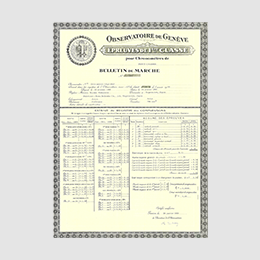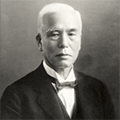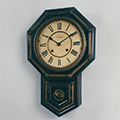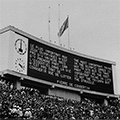― The Product that Ushered in the Age of the Self-Winding Watch ―
About the Seiko Sportsmatic 5
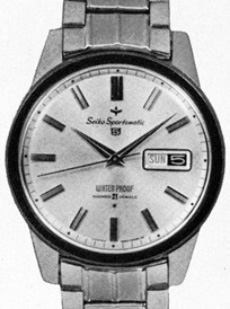
Seiko released the “Seiko Sportsmatic 5 (the “Five”)” in 1963.
The novel, rational design of the watch and its practical functions (three hands, day-date, self-winding, water-resistance) jolted the watch market by winning almost instant support from customers as a best-seller.
One year after the release of the “Five,” Seiko developed innovative clocking devices for the 1964 Tokyo Olympics. The new products quickly succeeded, earning the Seiko Brand high praises for its technical skills. Exports of the “Five” skyrocketed in the following year.
(The number of Seiko “Fives” exported from Japan in 1966 reportedly exceeded the total number of self-winding watches in all of Switzerland.)
The worldwide success of the “Five” popularized self-winding watches everywhere. The “Five” style has set the standard for practical functional watches ever since.
Factors behind the Success of the “Five”
Seiko’s Original and Simple Self-Winding Mechanism, the “Magic Lever”
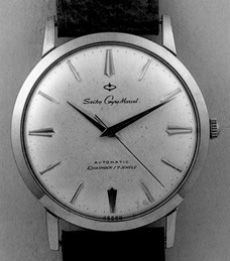
n 1959, Seiko developed a totally new self-winding mechanism, the “Magic Lever,” and installed it in its latest Seiko Gyro Marvel.
Several years later, Seiko refined the original Magic Lever mechanism and installed it in the “Five.”
The self-winding mechanism applied in watches from Switzerland and others in those days was a complicated and expensive arrangement of parts called the “Reverser Mechanism” or “Planetary Gear Mechanism.”
Seiko was developing a totally new self-winding mechanism in the hope of making self-winding watches available to people all over the world. In time, a reliable and simple “Magic Lever” with fewer parts was completed. The development of this mechanism lowered the price of self-winding watches to a reasonable level, opening the way to the widespread adoption of the self-winding watch after the release of the “Five.”
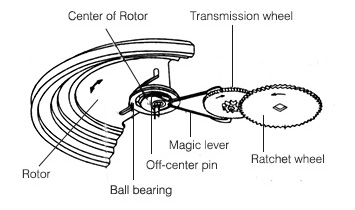
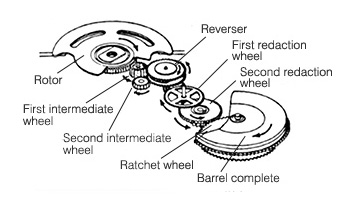
Principle of the Magic Lever
The “Magic Lever” is a mechanism to rotate the wheels in a single direction and wind up the mainspring efficiently by converting the movement of the rotor from a bidirectional rotation in response to the motion of the wearer’s arm into a reciprocating (push and pull) motion with the “Magic Lever” incorporated with the Off-center pin.
The “Magic Lever” is an original Seiko technology that can be truly described “Magic Hands.”
(The “Magic Lever” is a Seiko trademark generically called the “Pallet Lever Mechanism.”)
Development of a Simple and Visible “Day-Date Integrated Window” in the 3 o’clock Position
The “Day-Date Integrated Window” in the 3 o’clock position was first installed in the “Five.”
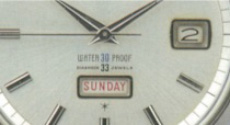
In a typical watch of the time, the day window was in the 3 o’clock position and the date window was in the 6 o’clock or 12 o’clock position. The same arrangement was planned for the “Five” at the beginning of the design phase.
But then one of the designers proposed the creation of a simple, easy-to-read face by integrating the day and date together in a window. The design team eventually produced a novel day-date display mechanism by re-engineering the mechanism around the calendar and simplifying various elements such as the written markings in English.

This mechanism led to the creation of a new, easy-to-read “Face” (design) for watches. The day-date integrated window only displayed in a single language, English, at the release of the “Five” just a year before the Tokyo Olympics. Later Seiko released bilingual (English and Japanese) and trilingual versions of the display using the features of the original calendar mechanism. The “Five” became very popular around the world.
Full Water resistance
Water resistance is a common feature in today’s watches. But these days watches ware normally not resistant to water. Lifeguards at beaches and swimming pools warned swimmers who wore watches. Professional-grade water resistance was of course available, but only in expensive, heftily designed watches.
“Full water resistance” was a key point in product planning for the “Five,” a watch designed for active young people. The goal was to give them a watch they could use whenever and wherever they wanted. Rustless stainless steel, a seldom-used material for watches, was selected for the outer case. The biggest design challenge was fitting the full-function movement of three hands, the day-date display, and the self-winding mechanism into a compact “water-resistant” case.
The “Seiko Exterior Milli meter Standards,” a new-dimension system for watch cases and dials evolving at the same time, enabled a high-precision outer design and provided key solutions for producing a compact, precise outer case.
This milli meter standards also played an important role in the mechanical design of the “Day-Date Integrated Window.”
What are the “Seiko Exterior Milli meter Standards”?
The "Ligne" was a unit of length used by watchmakers in those days.
The “Ligne” was a unit of length used in Switzerland and France before they adopted the metric system. One ligne was equal to 2.256 mm. Japanese watch manufacturers, who designed in millimeter , were troubled by the conversion to ligne, which always left unwieldy fractions in their specifications and drawings. The unwieldy numbers often resulted in unnecessary space between parts or imprecision in the relationships between the dimensions of parts and their tolerance.
The system was inappropriate for creating new design and new structures, as the model No. was based on the ligne No.
Seiko took the following steps to solve these problems:
1.Created basic design drawings in the metric system;
2.Minimized the gaps between the related dimensions and their tolerances insofar as was technically possible;
3.Clarified the relationships between the model No. and shape/dimensions, and;
4.Prepared a new type of coding system that could handle models even when models lines were increased.
These steps enabled Seiko to formulate a precise outer design.
The “Seiko Exterior Milli meter Standards” contributed not only to the production of “Five,” but also to the design, manufacture, sale, and after- sales service of later Seiko watches.
The metal band was a standard accessory
Most of the standard bands for watches in those days were leather or nylon, materials strong against sweat and water.
Since full water- resistance was the biggest target in the product planning for the “Five,” the band was made from stainless steel, the same material used for the case.
New size and adjustment methods to fit the watch to the arm enabled the design of a strong, attractive band with a performance suitable for a water-resistant watch.
The metal band was an important factor in projecting the image of a novel watch for active young people.
Improved Shock-resistant Performance and Adoption of a Tough Mainspring
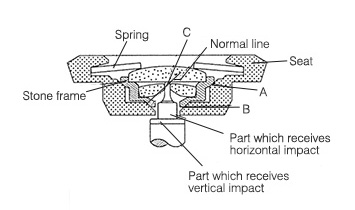
Most watch malfunctions of the time resulted from falling impacts (stopping the watch because of the break of the balance pivot (the rotation axis of the balance)) or insufficient winding due to “cuts” or “losses of spring power” in the mainsprings.
The “Five” designers adopted a shock-resistant “diashock” mechanism strong in vibration, together with a strong, tough special alloy material for the mainspring “diaflex.” These elements further enhanced the reliability and durability of the “Five” and won the watch its reputation for toughness. The “Seiko of Quality” image was fixed in the mindset of the global consumer.
Import of the First Marketing Methods
Back in the 1950s, the sales department determined how to sell timepieces manufactured in the production department. Later, leading up to the release of the “Five,” Seiko’s marketers used methods “to produce what customers would buy.”
Naming
The naming and acoustic image of the “Five” had a strong, fresh impact on young consumers and became successful factors in sales.
The name of the “Five” was derived from・・・
1.Self-winding (allowing high winding efficiency)
2.Water-resistant mechanism (protecting quality for many years)
3.(Visible) day-and-date-integrated window in the 3 o’clock position
4.Crown (which does not require manual winding) hidden in the 4 o’clock position
5.Masculine design (with a metal band)
Symbol Mark

The symbol mark (five sticker) and special package further highlighted the brand and contributed greatly to the marketing.
Advertising Campaign
A number of advertising campaigns toward the youth made a new market of fresh people and new members of society.
1963
The Seiko Self-Winding Lucky Chance Campaign
1964 “Start with Seiko” Campaign
Seiko received many prizes in marketing.
1964 Seiko received a bronze prize in the ADC prize TVCM Section, silver prize in the 4th CM Festival, and many other prizes.
Good Design Award
Seiko received its first Good Design Award for a timepiece in the first half of 1964.
The award was bestowed in recognition of the totally new design policy and innovative spirit reflected in the designs of the still uncommon “flat dial,” “day-date integrated window in the 3oclock position,” and “invisible crown in the 4 o’clock position.”
Conclusion
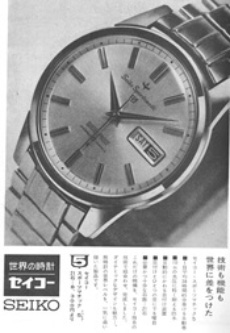
As seen from the above, the “Five” popularized the self-winding watch around the world and expanded Seiko’s watch business. The “Five” has also influenced Seiko’s product planning and the marketing strategy in the decades sense. The “Five” is a very significant product in Seiko’s history.


